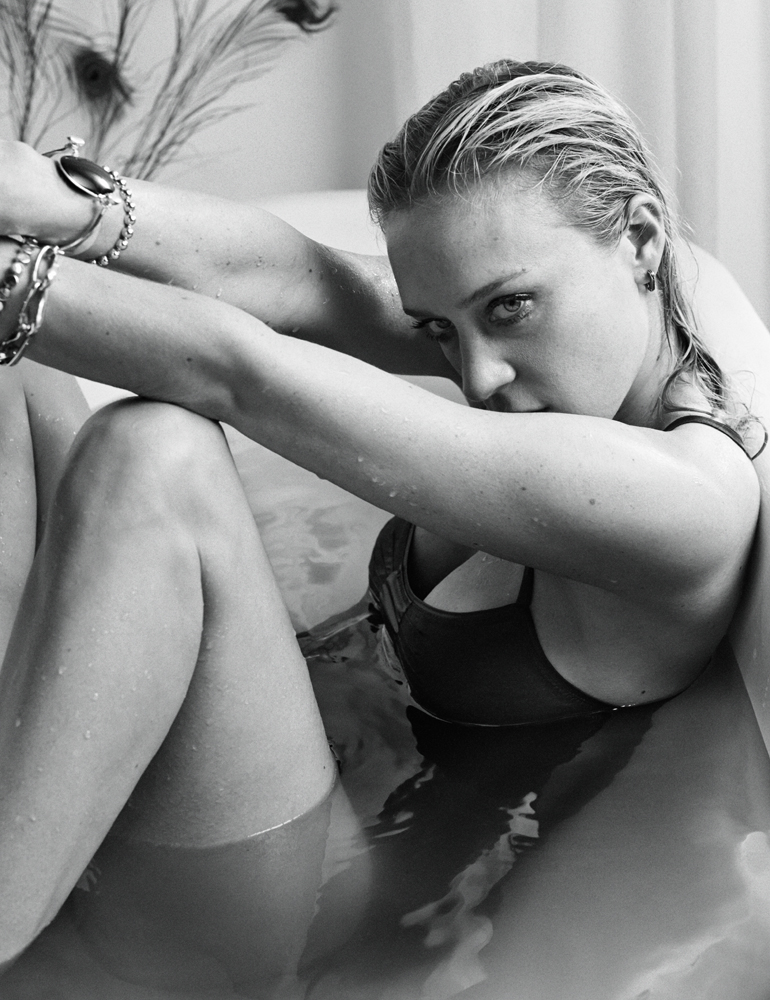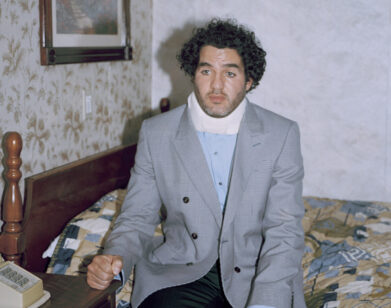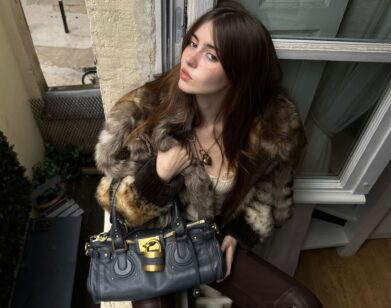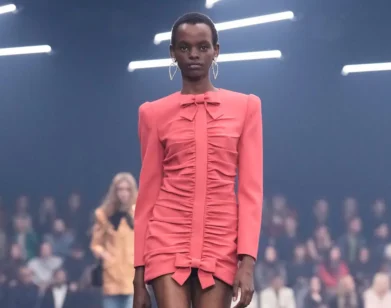Chloë Sevigny
In the early ’90s, Chloë Sevigny took the Metro-North Railroad into New York City from her home in Darien, Connecticut, and the rest is history. Of course, in reality it’s not that simple. If it were, we’d have a city teeming with Chloës, a film industry powered by tough, risky, shape-shifting actresses preferring meat to paychecks, a street style that actually commands forward stares and backward glances, and a music, art, and fashion scene deserving of America’s greatest metropolis. In many ways, Sevigny’s ascent is framed as a classic New York story: curious, preternaturally cool high school beauty enters the parks, clubs, and gritty side streets of downtown Manhattan, snags an internship at Sassy magazine, gets cast in a low-to-the-ground film about reckless teenage drifters, becomes a mainstay of independent cinema, receives obsessive attention for her idiosyncratic fashion sense, earns an Academy Award nomination, goes on to star in astonishingly disparate film and television roles, designs her own fashion line, and comes to represent the outsider spirit of an entire generation. But that is not the New York story—it is, rather, the lone exception. It’s Chloë’s story, and she told it herself.
This month, the photography book Chloë Sevigny (Rizzoli) charts that rather fantastical, visually ecstatic coming of age—street urchin to star—in pictures, Polaroids, snapshots, magazine covers, fashion ads and editorials, film stills, artworks, and various keepsakes. From shots by legendary fashion photographers to private hang-out moments (I personally love Chloë’s senior prom picture), the book is a wild ride through a well-spent youth. “Rizzoli approached me, and I thought, ‘Why not take this opportunity and show myself the way I want to be seen?’ ” Sevigny explains of its genesis. “I wanted to make it small and intimate, a personal book. And I wanted it to be affordable so kids could go out and buy it. I didn’t want to do a super-high-fashion glossy thing, because that’s not me. I wanted it to really reflect who I am and where I came from.” To celebrate the publication, we asked 12 friends and colleagues to each contribute one question for Sevigny to answer. Honesty is another thing she does very well. -Christopher Bollen
NATASHA LYONNE: I’m curious about your habitual nature—a routine that’s been the same since I met you decades ago and can’t foresee you ever changing deep into a Jetsons future. You always go to church on Ash Wednesday, you always take the subway, and you always go home for the holidays. (Sometimes you do all three of these activities on the same day!) How have these three things informed your understanding of people, your grasp on reality, and staying grounded and sane over the years?
CHLOË SEVIGNY: My parents found tradition and ritual very important, because they were both brought up that way and found comfort in it. They thought it was important for children to be kept on a schedule. So I was just raised in an environment where that’s what you did. There was no question about it. You went home for the holidays, you went to mass on Sunday—no ifs, ands, or buts. That was ingrained in me from a very young age, and I think that’s informed who I am in so many aspects of my life. I crave stability and a schedule and the security that comes along with it. That’s why I gravitate to people whose upbringing was similar. It makes me feel safe. It’s also made me a little obsessive-compulsive in a way. As for public transportation, I think part of the reason I take the subway is because I don’t like having someone else driving. It’s hard for me to be in a cab, because the traffic makes me feel insane. On the subway you’re getting there faster and it’s easier. I’m also frugal. It’s often cheaper to take the subway. And I’m an environmentalist, which my mother instilled in me, so I really believe in public transportation. And finally, I love the proximity to people in the subway. New York is so diverse, and yet you often end up in homogenized places with the same faces, going to the same restaurants. When you’re on the street or in the subway, you’re experiencing more of the diversity of New York.
RITA ACKERMANN: What was the most intense experience you’ve had with an artwork?
SEVIGNY: I don’t know if this is the most intense, but growing up I was very into art. In high school I was into the surrealists and impressionists, and I loved Klimt—you know, the typical things you’re into in junior high and high school. But I remember I was coming into Manhattan in ’91 or ’92, and I saw one of those Felix Gonzalez-Torres Untitled billboards. I was just really arrested by it. It was kind of my first foray into contemporary art. I remember pondering it and staring at it and being like, “What is this all about?” and being kind of flabbergasted. So I investigated and read about it and understood how to put it in context. It was a turning point for me as to what art could be and what it meant and the impact it could have.
WHIT STILLMAN: I see Chloë every day on set! Here is my question: “Could you say that again, but differently?” (Hope her response will be: “Yes.”)
SEVIGNY: “Of course I could say it again but differently. But why don’t you tell me how you want me to say it, and I’ll just repeat you.” Most actors do not appreciate line readings, but, Whit, when it comes to you, I’ll take one any day. Whit says, “Again, again, again.” That’s how he does it during filming. You’ll say a line, and he’ll be like, “Again.” It’s a pretty intense thing that he puts an actor through.
LIZZI BOUGATSOS: If you could sit down for dinner with three people from the past, present, or future, who would they be?
SEVIGNY: From the past, definitely my mother’s mother, who I never met—she passed away before I was born. She was something of an eccentric woman, quite bohemian. I would like to have known her. From the present, you, Lizzi, because you’re my favorite meal companion. And from the future, an offspring of mine, hopefully. Like, I’d love it to be my child, let’s say in her thirties.
LARRY CLARK: Have you had your heart broken recently?
SEVIGNY: Not recently. The last time I had my heart broken was about six years ago. I mean, really broken, like, I felt the pangs for years. I still have them. It still kind of creeps in here and there, especially when I sit and reflect on the boy, the lost love. I think it never really goes away fully. But the pain definitely subsides.
KIM GORDON: What’s the movie you want to make?
SEVIGNY: Well, Kim, you know that I’m interested in making a particular short movie. But I feel, with movies, it’s hard when you talk about things preemptively because people get excited about it, but the film industry is so fickle about financing, and it’s so difficult to get movies made. So I have to keep this idea on the down low early in the process, because so many things could happen and it could fall through. It’s kind of like a pregnancy through the first trimester. But there are a lot of movies I’d like to make, and plenty of books I’d like to adapt.
KIMBERLY PEIRCE: What situation have you put yourself in that changed you the most?
SEVIGNY: I guess it would be the decision to become an actress. I could say more specifically it was choosing to do Kids [1995]. They offered me the lead part two days before they started shooting. I was just going to do a smaller part, and then they asked me if I wanted to play the lead. I gave the script to my father to read—and it’s a pretty crazy part. I remember he read it on the beach in Connecticut, while I was sitting next to him. But it was okay because he knew Harmony. We were friends. After Kids, there began to be some interest. People were calling the production company asking how to find me because they wanted to offer me parts. This woman said she’d like to manage me; she was working for the producer at the time and wanted to become a manager. I thought, “How do I navigate this?” So that was really an opportunity to choose this career path, to make a conscious decision to pursue acting and put myself out on the line for all it entails. I was still working at Liquid Sky when Kids came out; I was still considering getting into fashion or God knows what else.
LISSY TRULLIE: Is there one statement that you’ve been quoted as saying that you wish you could take back?
SEVIGNY: I wish I could take back every interview. I’ve been to psychics and psychiatrists and have said, “There’s something that happens when I have to do an interview—I just lose confidence and my voice.” Over and over again, I read them later, and either I’m misquoted or I said something stupid. I’m just not very good at it. It’s never been to the point of a huge disaster. I’ve recovered. But I did have someone recently write to me and say they were hurt by something I said about them. I was saying something off the cuff and I think the humor was a little lost in print. I felt bad I had hurt someone’s feelings and had to write them back and kind of explain how the press works.
HUMBERTO LEON & CAROL LIM: If the grabbing hands grab all they can, what would be your large amounts?
SEVIGNY: That’s from “Everything Counts,” a Depeche Mode song about the record industry and corporate greed. I feel terrible about corporate greed. Growing up in a household that was a little more humble and didn’t put so much emphasis on money and material goods, I think I have a pretty good head on my shoulders. I’m not the greediest person. Of course, I work in a business where that’s all relative and there’s a lot of money to be made. I think I’m satisfied making as much as I have and I don’t feel particularly driven to have more. I feel like I don’t need that much. I realize I’m saying this from a nice apartment in Brooklyn. [laughs] But also, as far as corporate greed is concerned, I try to shop mostly at mom-and-pop stores and not support brands or corporations. Some are obviously unavoidable, but I try to do the little I can in my day-to-day life to make an impact.
JUERGEN TELLER: Dear Chloë, the last time I properly saw you was in 1995. Do you want to have a coffee with me?
SEVIGNY: Was it that long ago? Yes, I guess I’d have a coffee with you. I’ve always had a strange relationship with Juergen, in terms of his work.
RYAN MURPHY: If one wanted to be a style icon on the scale of Chloë Sevigny, what two rules would one need to know?
SEVIGNY: Two rules? Well, one is no rules, as they say. But I think to be a true style icon, you just have to dress yourself. There are so many actresses floating around who have people picking out their outfits for them; that’s hard for me to wrap my head around or celebrate. To be a true icon, you have to have style emanating from you. And you have to have figured it out on your own and have a point of view, a perspective, and be able to translate it in some personal way.
NATASHA LYONNE IS A NEW YORK-BASED ACTRESS WHO CURRENTLY STARS IN ORANGE IS THE NEW BLACK, AND WILL APPEAR IN THE FILMS FRESNO AND HELLO, MY NAME IS DORIS. RITA ACKERMANN IS A NEW YORK-BASED ARTIST. WHIT STILLMAN IS A WRITER AND DIRECTOR CURRENTLY WORK ON THE FILM LOVE AND FRIENDSHIP AND THE SERIES THE COSMOPOLITANS. LIZZI BOUGATSOS IS A NEW YORK-BASED ARTIST WHOSE BOOK, HER PERFUME TEARS, IS OUT NOW. SHE IS ALSO A MEMBER OF THE GROUPS GANG GANG DANCE AND I.U.D. LARRY CLARK IS A DIRECTOR, PHOTOGRAPHER, AND WRITER. KIM GORDON IS A NEW YORK-BASED ARTIST AND MUSICIAN. HER MEMOIR, GIRL IN A BAND, IS OUT NOW. KIMBERLY PEIRCE IS A FILM DIRECTOR AND WRITER, BEST KNOWN FOR THE FILM BOYS DON’T CRY. LISSY TRULLIE IS A NEW YORK-BASED MUSICIAN. HUMBERTO LEON AND CAROL LIM ARE THE CO-FOUNDERS OF OPENING CEREMONY AND THE CREATIVE DIRECTORS OF KENZO. JUERGEN TELLER IS A LONDON-BASED PHOTOGRAPHER WHOSE LATEST BOOKS ARE THE FLOW AND SIEGERFLIEGER. RYAN MURPHY IS A SCREENWRITER AND DIRECTOR. HIS UPCOMING PROJECTS INCLUDE AMERICAN HORROR STORY: HOTEL, SCREAM QUEENS, AND AMERICAN CRIME STORY.







